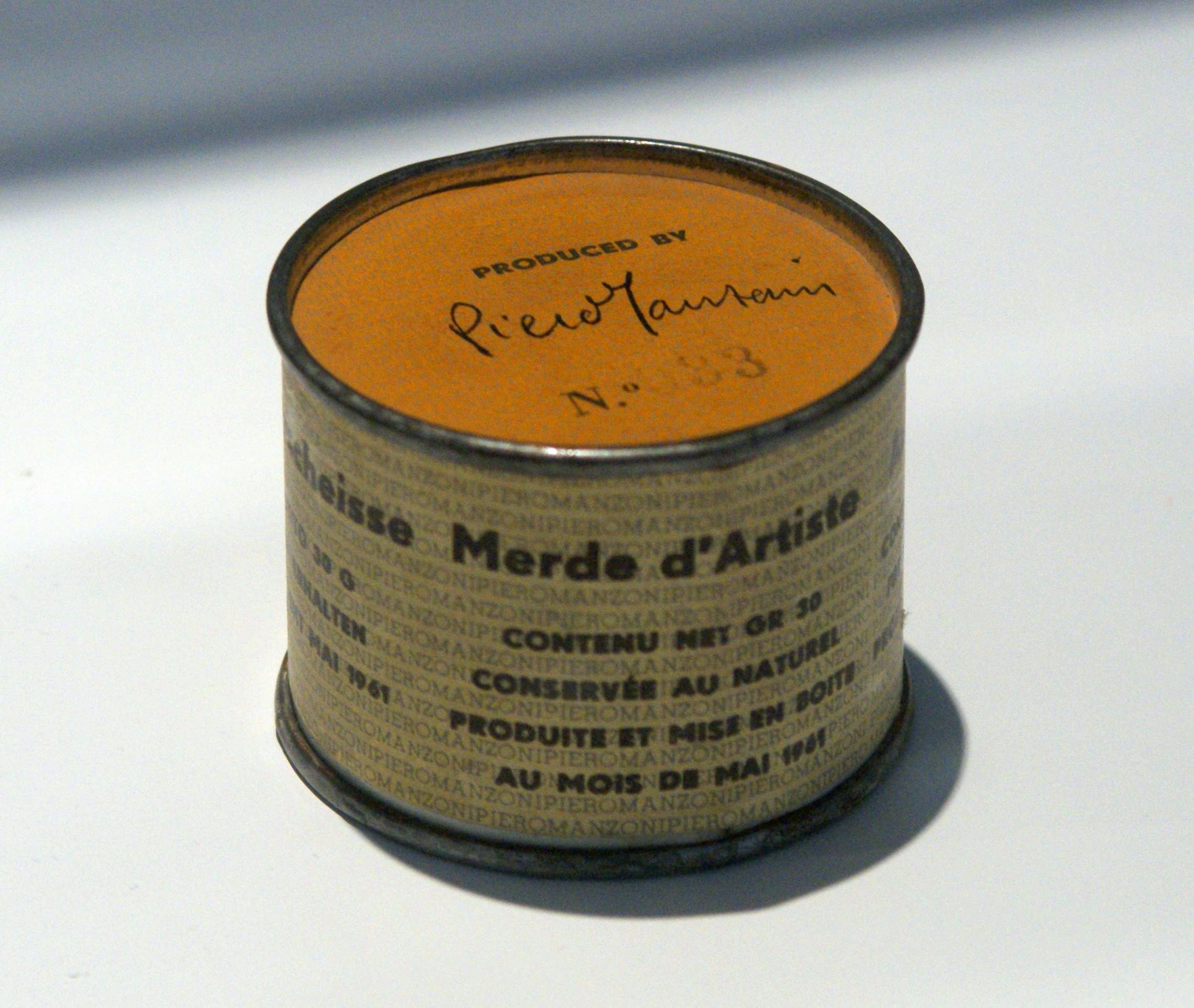
What’s the deal with Leonardo’s harpsichord-viola? Why were Impressionists obsessed with the color purple? Art Bites brings you a surprising fact, lesser-known anecdote, or curious event from art history. These delightful nuggets shed light on the lives of famed artists and decode their practices, while adding new layers of intrigue to celebrated masterpieces.
“Your work is shit”. So, legend has it, said Egisto Manzoni about the art of his son, Piero. Rather than discouraging the enfant terrible of the Italian avant-garde, the words inspired him.
In 1961, Manzoni produced 90 cans of Artist’s Shit by sealing 30g of his own excrement (allegedly) inside steel cans. Each can had a label in Italian, English, French, and German confirming the contents had been “freshly preserved, produced, and tinned.” The lids were numbered 001 to 090 and signed by the artist.
How did Manzoni produce the cans? Using his father’s canning factory. Naturally. As for price, the 27-year-old stated the works should be worth their weight in gold—roughly $37 at the time.
As he wrote to his friend and artist, Ben Vautier: “If collectors want something intimate, really personal to the artist, there’s the artist’s own shit, that is really his.”
Manzoni was satirizing the increasingly capitalistic art world that had developed in the post-war years (hello, Jackson Pollock) in a sly nod to the readymades of Marcel Duchamp. With the artist fetishized and most everything they touched commodified, Manzoni had previously filled balloons with “the artist’s air” and laid “the artist’s fingerprint” on hard-boiled eggs. The cans pushed this practice to its extreme.
It worked. It’s unknown how many cans Manzoni sold in his lifetime, but his premature death in 1963 secured Artist’s Shit as his signature work and rendered the cans an important period collectible. It’s duly been acquired by Centre Pompidou, Tate, the Guggenheim, and MoMA, which owns no. 014.
Today, of course, the works are worth considerably more than their weight in gold. In 2016, for example, no. 069 sold at auction in Milan for around $300,000 (as opposed to $1,321 in gold). This price inflation has continued despite the art world’s skepticism over whether the cans truly contain Manzoni’s excrement.
As steel objects, they cannot be x-rayed and findings of a 1989 exhibition by Bernard Bazile, titled “Opened Can of Piero Manzoni,” were inconclusive. Inside the can Bazile found another can, one he was unwilling to open. You sense Manzoni would be most amused.